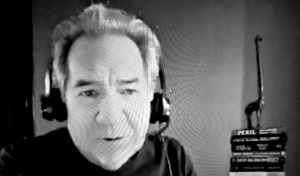
C.L.E.A.R. Leadership Coaching
helps develop the coaching capabilities
of people managers

How might the approaches described in C.L.E.A.R. Leadership Coaching
help develop the coaching capabilities of people managers
within your organization?
C.L.E.A.R. leadership coaching
Even highly effective employees are not always comfortable in new job roles. A manager can give lots of positive feedback and redefine the employee’s role to better utilize skills so that the employee can make a more significant contribution to the department. Perhaps the new job role comes with a more senior title, and the manager explains that the enhanced role and title is recognition for the employee’s excellent capabilities.
Despite this, the employee may be very anxious. She or he may express concern about the new role and not feel able to perform as well in the new situation as in the past. If the employee wants to speak with you about the anxiety and asks you for coaching in this situation, what do you do and where do you start?
This kind of situation is occurring frequently in the workplace. It’s important to be aware that coaching as a people manager in the workplace is quite different from coaching as an external leadership coach. External leadership coaching has a regular cadence of weekly or bi-weekly engagement for about an hour and requires someone who is highly skilled at coaching. In contrast, a people manager might be expected to coach episodically for a brief amount of time and empower the employee to take action from that conversation.
There are two kinds of coaching that people managers often engage in:
(1) when the employee initiates the coaching (similar to the opening example), and
(2) when the people manager initiates the coaching based upon something that he or she wants to discuss.
The approach we developed for people managers in both coaching scenarios is called C.L.E.A.R. Leadership Coaching.

WHAT IS C.L.E.A.R. LEADERSHIP COACHING?
There are five distinct components for coaching by people managers, each represented by one letter of the acronym C.L.E.A.R. The five components are: Context, Listen, Empathy, Action and Respect.
Each one of the components is designed to optimize coaching effectiveness and avoid the common mistakes in coaching situations regardless of whether the employee or the people manager initiates the coaching. C.L.E.A.R. also symbolizes an aspirational outcome of the coaching: for the employee to emerge as empowered with greater clarity to proceed to meaningful action.
These five components of C.L.E.A.R. Leadership Coaching entail ten coaching techniques as well as common errors:
CONTEXT
People managers need to understand that all coaching happens within a context. The context is shaped by the employee’s work context and personal context. Also, the work dynamics and the openness to coaching will be affected by the psychological safety in the work environment. Work contexts that are psychologically safe consist of individuals who are willing to speak up and contribute ideas without fear of being reprimanded or viewed negatively. People managers need to understand and appreciate the context from the perspective of the employee as the foundation of the overall coaching discussion.
Common error: The important message to remember is that context is subjective. Not recognizing this is a common error people managers make. Each person in the workplace experiences the same context in their own unique way. This observation was most evident during COVID when all employees experienced the pandemic, but depending on one’s personal life and work situation, each person had a different experience of it.
LISTEN
People managers need to listen throughout the coaching, but they need to pay particular attention to listening at the start of the coaching discussion. In situations when an employee initiates coaching, it is important to ask questions that help the employee focus on the issue they would like to discuss. One opening question that can launch a coaching conversation is, “What’s on your mind?” That question works very well to pivot the discussion from the casual conversation at the beginning of the meeting to coaching. After listening and paraphrasing the employee’s answer, people managers need to find out how to be of greatest value rather than to assume they know the answers. The people manager might ask, “How can I help?” The same approach is used when the people manager wants to initiate the coaching with the employee. In this scenario, the people manager might begin by saying what he or she wants to discuss and ask the employee to share what is on his or her mind related to that issue and then follow up with, “How can I help?” Even when the people manager is initiating the coaching, the best approach is to move quickly to a listening mode.
Common error: A common coaching error is when the people manager over-identifies with the situation and says, “I went through a similar experience and here’s what I did.” When people managers reply in this way, they are not helping the employee but rather demonstrating they are not really listening. Instead, the people manager should encourage the employee to define the issue, whether the initiation of the coaching was by the employee or the manager.
EMPATHY
Empathy is required throughout the entire coaching conversation, however, in the middle of coaching, empathy has an even greater level of importance. People managers need to ask “what” questions to help the employee go deeper, and to surface patterns. One very helpful “what” question is: “What does ‘x’ mean to you?” For example, if the employee says he or she is “upset,” then the people manager can ask with empathy, “What does ‘upset’ mean to you?” Or, if the employee wants to “improve,” the people manager can use that opportunity to encourage the employee to go deeper by asking, “What does ‘improve’ mean to you?” Sometimes employees will articulate a thought they knew already, but many times, by responding to the question out loud, they become aware of something they may not have detected before. It also helps if the people manager inquires about patterns, for example, by asking, “What might be an example of something that occurred previously which is like this experience?” and then the employee reflects on the connections to see patterns.
Common error: People managers need to dispense with asking close-ended questions, and instead become skilled at asking open-ended “what” questions. In this way, the empathic people manager can help the employee go deeper and identify patterns.
ACTION
Action in coaching is about encouraging small steps rather than bold ones. It’s about mobilizing the employee to feel empowered rather than mapping out a longer-range elaborate plan. Some questions that work well in the Action component of coaching are, “What is most important to you?”, “What is a small step you can take now?”, “What might be holding you back?” and “What becomes possible for you?” At the conclusion of coaching, we encourage people managers to ask, “What are your takeaways from this discussion?” With this information, the people manager can better support the actions the employee plans to take as a result of the coaching.
Common error: One common mistake people managers often make is to assume the actions need to be elaborate and accomplished quickly. That may be the expectation in business planning, however, in coaching “slow is fast.” Employees need to self-identify and commit to small steps they feel confident they will take. Those small steps will serve as a catalyst for the employee to find the next small step without assistance.
RESPECT THROUGHOUT
Capable people managers need to acknowledge and recognize an employee and show appreciation, and it is a good practice to do that during the coaching conversation as well. For example, a people manager might say in coaching, “I want to acknowledge you for your effort and your thoughtfulness,” or “I see how much you care and how far you have come,” or “I hear how much this means to you.” Be sincere and specific with the acknowledgement. Employees often respond with appreciation that the people manager acknowledged them for who they are.
Also, people managers show respect in coaching by not taking over and giving advice. When feeling compelled to give advice, the people manager can show respect by first asking permission to determine if the employee wants to hear the advice by asking, “Would it be okay if I offered a suggestion?” The people manager can then offer the suggestion by saying initially, “I was wondering about…” to empower the employee to reflect on the suggestion. These kinds of questions allow the employee to respond and take ownership of what he or she chooses to do.
Common error: Sometimes the people manager may want to take control of the situation and tell the employee what to do. This might occur especially in situations when the people manager is not satisfied with the employee’s small steps. The preferred approach is to ask questions to help the employee consider other options without making the employee feel like their supervisor is telling them what to do. Instead of proposing another option, the people manager can ask, “I am curious about what else might be possible.” Coaching is not about telling employees what to do but rather empowering employees to make choices or to change.
CONCLUSION
People managers need to embrace coaching as a core leadership practice—both when they initiate it themselves and when their employees initiate it. The five components of C.L.E.A.R. Leadership Coaching are very helpful guideposts for people managers to provide coaching that can make a meaningful difference. In our extreme times of uncertainty and ambiguity, it becomes even more important that people managers develop these coaching capabilities to empower employees to define their own issues, own their own insights, make choices and commit to small steps that they can put into action.
Yes, we are LINKMAKERS™
LEARN MORE ABOUT US



![]()
Long-time in the business of advertising, Public Relations consulting services,
media/channel ownership; publishing/program creation & development,
marketing/distribution/exhibition.
 I relocated from Boston to LA during 1980 and began publishing/distributing
I relocated from Boston to LA during 1980 and began publishing/distributing

CALIFORNIA BOUND™
a series of Professional Recruitment / Relocation Guides
Website http://globalbusinessnews.net click, learn about it launched 2003
GlobalRADIOtalkshow.com click, learn about it launched 2011
GlobalTVtalkshow.com click, learn about it launched 2020
GlobalPressClub click, learn about it subscription $1/day launched 2022
AUDIENCE MEASUREMENT
source GoogleAnalytics
192,693 audience visits/pageviews JAN 2020 – SEP 10, 2022 into 100+ countries.
AUDIENCE MEASUREMENT
source GoogleAnalytics
Since JAN 2015; recorded 522,152 audience visits/pageviews, including GlobalTVtalkshow.com
AUDIENCE DISTRIBUTION
(combined) 2022 year-to-date;
70% US + Canada + LatAm
20% Europe
9% APAC
1% ME + Africa
…………………………………………..
#1 “live” meeting was produced in L A at the Chamber of Commerce in October 1984 and more than 100 attended including HR Heads and Relocation Managers.
…………………………………………….
#1 event outside USA was produced in London NOV 1997 then Paris followed by Amsterdam, Madrid, Berlin, Milano, across Switzerland.
Additional “live” events: Canada, Mexico, Panama, Brasil.
our
favorite
CHARITY
fights Parkinson’s, Alzheimers
The Foundation Institute for Neurological Diseases dba Find Neuro Help, is a 501©(3) nonprofit private foundation, founded in 2014 in Irvine, California. Public Filings: http://findNEUROhelp.org prides itself on being transparent with the public and our donors. Learn more about our public filings / financial information HERE. Federal tax ID # 86-1913526.
Revenues generated on GlobalBusinessnews.net, GlobalRADIOtalkshow.com, GlobalTVtalkshow.com, GlobalPressClub, and Comarketing Consulting …derived from sponsors, partners, advertisers, subscriber/memberships, consulting fees…, we are able to provide the charity http://findNEUROhelp.org ongoing PR consulting, product development, Marketing assist, creating positive PR awareness across the business community by providing frequent media exposure 24/7/365, intros and speaking on talk shows.
Working together, we developed MedicalTVtalkshows™click, watch a program. MedicalTVtalkshow is a broadcast series presenting doctors and research scientists, foundation leaders, “well-being” subject authors, and others.
If you are interested to donate or simply learn more, or if you know someone who might be “in need” of advice because of recently been diagnosed… I’m avail to quickly introduce you to the charity’s Director/coFounder, Mark Colo, a current Parkinson’s patient.
FYI, for several years Mark was a successful transport exec based in Southern California specializing in relocating Doctors/research scientists from across the world into University of California Irvine, a top medical center.
Contact me directly for more info or an intro
 Ed Cohen (+1)619 787 3100 WhatsApp ok
Ed Cohen (+1)619 787 3100 WhatsApp ok
or email me publisher@globalbusiness.media







#infographics Weiss’ C.L.E.A.R. Leadership Coaching
Source: Dr. David Weiss, C.L.E.A.R. Leadership Coaching (2022)
Sketchnote: Hayley Lewis @HayPsych
I am honoured that Hayley Lewis designed this beautiful infographic describing the C.L.E.A.R. Leadership Coaching framework that I developed for people managers within organizations. I have been teaching the C.L.E.A.R. Leadership Coaching framework virtually to groups of people managers in organizations and we have been applying it as well in our individual leadership coaching practice.
Please let me know via a direct LinkedIn message if your organization would be interested in our C.L.E.A.R. Leadership Coaching virtual 2-hour workshop, or if your organization is interested in our individual leadership coaching services.
If you enjoy my daily infographics, then share them with your network.
#innovation #leadership #leaders #coaching #learning #HR #HRBP #CHRO #CEO #CMO #CFO #CIO #culture #engagement #change #ESG #EI #wellness